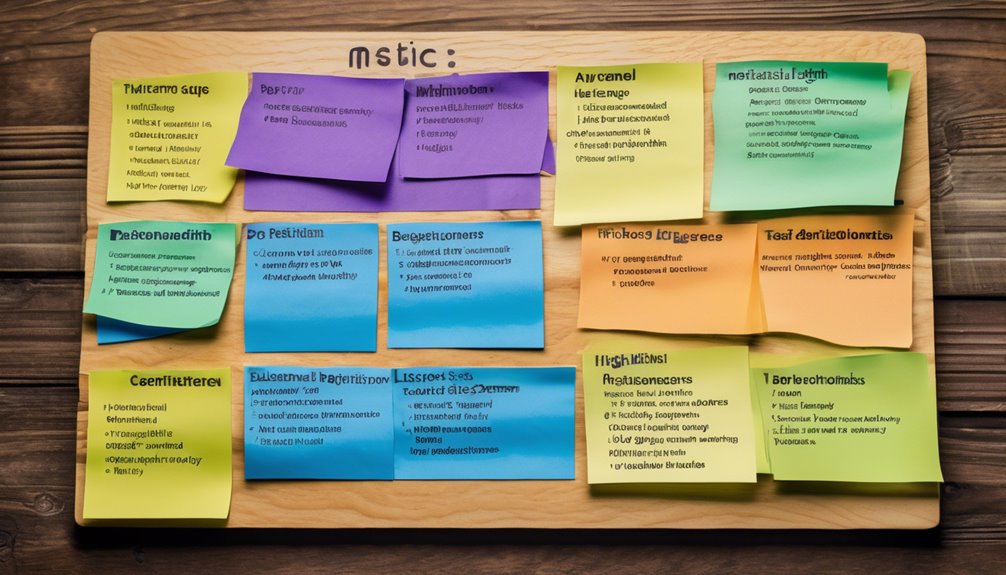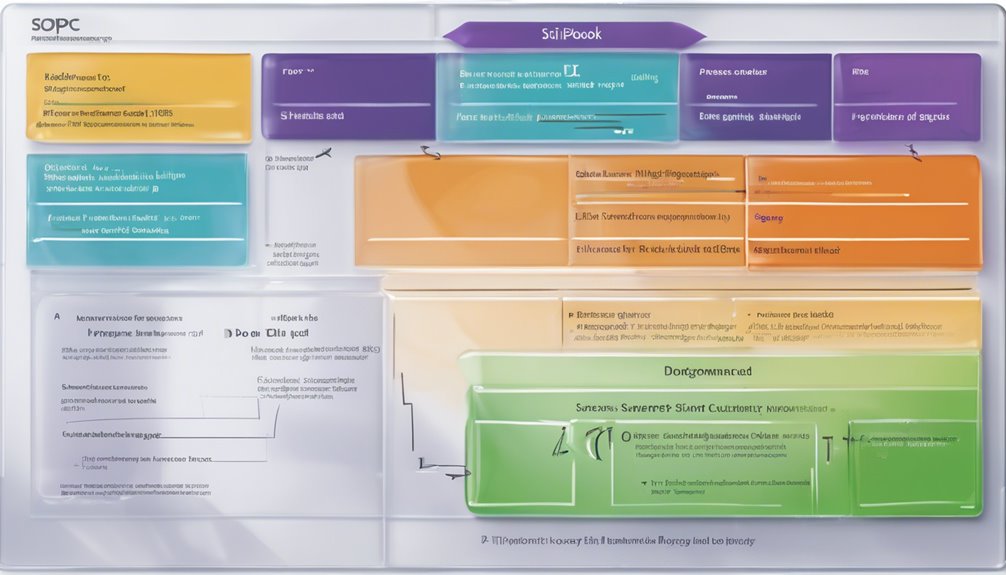When you think about process improvement, a SIPOC diagram can be a game changer. It outlines the key elements of your process, helping you visualize how everything connects. By identifying suppliers, inputs, processes, outputs, and customers, you can pinpoint inefficiencies and clarify roles. But there's more to it than just creating a diagram. Understanding how to effectively implement and utilize it can significantly enhance your team's performance. What's the first step you should take?
What Is a SIPOC Diagram?

A SIPOC diagram is a visual tool that helps you understand a process by mapping out its key components. It stands for Suppliers, Inputs, Process, Outputs, and Customers.
By using this diagram, you can quickly identify who provides the resources, what those resources are, the steps involved in the process, the end products, and who benefits from them. This clear structure allows you to visualize relationships and dependencies, making it easier to communicate information to your team.
You'll find it particularly useful in project management, process improvement, and strategic planning. Creating a SIPOC diagram can streamline discussions and ensure everyone's on the same page about a process, leading to more effective collaboration and decision-making.
The Importance of SIPOC Diagrams in Process Improvement
Understanding a process through a SIPOC diagram isn't just beneficial for clarity; it also plays a vital role in process improvement. By mapping out Suppliers, Inputs, Processes, Outputs, and Customers, you gain a holistic view of how each element interacts.
This insight helps you identify bottlenecks and inefficiencies that may be hindering performance. When you visualize these connections, it becomes easier to pinpoint areas that need enhancement or re-engineering.
Additionally, involving your team in the SIPOC creation fosters collaboration and ensures everyone understands the process, promoting buy-in for changes.
Ultimately, using a SIPOC diagram empowers you to drive continuous improvement, streamline operations, and enhance overall customer satisfaction, making it an invaluable tool in your process improvement toolkit.
Components of a SIPOC Diagram

Creating a SIPOC diagram involves five essential components: Suppliers, Inputs, Processes, Outputs, and Customers.
First, identify your Suppliers, the entities providing the necessary inputs for your process. Next, list the Inputs, which are the materials, information, or resources needed to carry out the process.
Then, define the Processes, the steps taken to transform inputs into outputs. After that, outline the Outputs, the final products or services delivered to customers.
Finally, specify the Customers, the individuals or groups who receive the outputs. Each component plays a crucial role in understanding the overall process and ensuring clarity.
How to Create a SIPOC Diagram
With the components of a SIPOC diagram clearly defined, you can now focus on the process of creating one.
Start by gathering a team that understands the process in question. Define the process's name and its scope to set clear boundaries.
Next, list the key Suppliers who provide inputs, then identify the Inputs they deliver.
Move on to outline the Process steps, ensuring they're in a logical order.
After that, specify the Outputs produced by the process.
Finally, identify the Customers who receive these Outputs.
Once you've gathered all this information, compile it into a table format, ensuring each component is clearly labeled.
Review the diagram with your team to confirm accuracy before finalizing it.
Best Practices for Using SIPOC Diagrams

When utilizing SIPOC diagrams, it's essential to keep a few best practices in mind to maximize their effectiveness.
First, involve a diverse team in the creation process. This ensures you capture different perspectives and insights.
Second, keep your diagram simple and clear; avoid unnecessary jargon that might confuse participants.
Third, regularly review and update your SIPOC diagram to reflect any changes in processes, inputs, or customers.
Fourth, use it as a living document that guides discussions and decisions, not just a one-time exercise.
Lastly, ensure you define goals clearly to maintain focus on what you want to achieve.
Examples of SIPOC Diagrams in Action
SIPOC diagrams can transform your understanding of processes by providing clear visualizations of key elements. For instance, imagine you're optimizing a customer service process. You can create a SIPOC diagram to identify your suppliers, inputs, processes, outputs, and customers. This helps you visualize the flow and spot any bottlenecks.
Another example is in manufacturing. You might map out the production process, noting suppliers of raw materials, the machinery used, and the end products delivered to customers.
By visualizing these components, you clarify responsibilities and improve communication among teams. SIPOC diagrams not only highlight areas for improvement but also foster collaboration, ensuring everyone's on the same page.
These real-world applications can significantly enhance your process management efforts.
Common Mistakes to Avoid With SIPOC Diagrams

Many organizations make common mistakes while creating SIPOC diagrams that can hinder their effectiveness. One major error is being too vague in defining the process. You need to outline clear, specific steps to avoid confusion.
Another mistake is neglecting to involve key stakeholders. Their insights are crucial for accurate inputs and outputs. Additionally, failing to keep the diagram updated can lead to outdated information, which diminishes its value.
Be careful not to overload the diagram with excessive details; simplicity is key. Lastly, overlooking the importance of customer perspectives can result in missed opportunities for improvement.
Integrating SIPOC Diagrams With Other Tools
Although creating a SIPOC diagram is a valuable exercise on its own, integrating it with other process improvement tools can enhance its effectiveness and provide deeper insights.
For example, you can combine SIPOC with a value stream map, allowing you to visualize both the process flow and the key inputs and outputs. This integration helps identify bottlenecks more effectively.
Additionally, using SIPOC alongside root cause analysis tools can clarify how specific inputs impact outputs.
You'll find that cross-referencing SIPOC with project management frameworks, like Agile or Lean, can streamline workflows and improve team communication.
Benefits of Using SIPOC Diagrams for Teams

Integrating SIPOC diagrams into team workflows offers numerous benefits that can significantly enhance collaboration and clarity. First, these diagrams provide a clear visual representation of processes, making it easier for everyone to understand their roles and responsibilities. This shared understanding helps minimize misunderstandings and miscommunications.
Additionally, SIPOC diagrams promote a structured approach to problem-solving, allowing teams to identify key inputs and outputs quickly. This clarity helps you focus on what truly matters, streamlining your efforts and improving efficiency.
Moreover, using SIPOC diagrams fosters better discussions, as team members can refer to specific elements in the diagram.
Case Studies: Successful Implementation of SIPOC Diagrams
When teams apply SIPOC diagrams effectively, they often see remarkable improvements in their processes. For instance, a manufacturing company facing delays utilized a SIPOC diagram to clarify their supply chain. By identifying key suppliers and processes, they streamlined operations, reducing lead times by 30%.
In another case, a healthcare organization implemented a SIPOC diagram to enhance patient care. They mapped out inputs like patient data and outputs like treatment plans, which helped them pinpoint inefficiencies. As a result, they improved patient satisfaction scores significantly. These examples show how SIPOC diagrams can transform workflows, enhance communication, and drive efficiency. Additionally, using a SIPOC diagram aligns with the DMAIC process of Six Sigma, ensuring a structured approach to process improvement. You can leverage this tool to pinpoint gaps and optimize your processes, leading to better outcomes for your team.
Conclusion
In summary, a SIPOC diagram is an effective tool for streamlining processes and boosting team collaboration. By clearly defining suppliers, inputs, processes, outputs, and customers, you can identify inefficiencies and areas for improvement. Remember to keep your SIPOC updated and involve your team for the best results. Embracing this tool not only enhances communication but also leads to greater customer satisfaction, making it a valuable asset in your process improvement journey.

